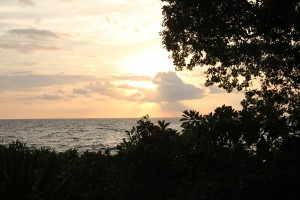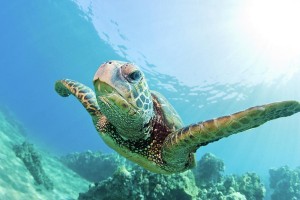August 22, 2016

Jack Kittinger, Senior Director of the Conservation International (CI) Hawaiʻi Program, works to protect Hawaiʻi’s natural resources for the benefit of the state’s communities. Today he’s taken a short break from the sun and the surf to meet with partners in Washington D.C. to advance this mission. We caught up with Jack for an interview as he navigated through the DC Metro System on his way to key meetings.
What have you learned about traditional knowledge in Hawaiʻi?

It’s extremely important to recognize that indigenous people are the first stewards – this is becoming globally recognized. People that have co-evolved with transformed ecosystems have developed amazing knowledge sets and practices, which ensured the survival and health of people and nature. The challenge we face is how to implement traditional knowledge in conventional management, in an ever-changing world where the scale of threats is shifting. It doesn’t matter if you’re in a forest, grasslands, or coral reefs – the single biggest challenge is getting a disparate set of community members to engage in collective action for mutual benefit. Traditional knowledge has much to offer in telling us how to adapt and evolve. This is both our biggest challenge and the biggest opportunity.
Did you pick-up any Hawaiian phrases or sentiments that embody the culture of conservation?
Like most people that live and work in Hawaii, I have tremendous respect for the values and practices of Native Hawaiian culture. I am honored to have been invited to work with communities across the pae‘āina (the archipelago). The legacy of understanding and preserving cultural mores, values, and practices is shared in the incredible archives of scholars such as Mary Kawena Pukui, but also in the living traditions of communities, and in the evolving scholarship by Native Hawaiian writers and researchers. The repository of Native Hawaiian language newspapers, for example, is giving us guidance on very contemporary challenges such as climate change. This knowledge source is a gift from previous generations to ours.
One of my favorite mo‘olelo (proverbs) that comes to mind when applying traditional knowledge to conservation is “I ka wā ma mua, ka wā ma hope,” which loosely translates to “we look to the past as a guide to the future.” This proverb embodies the Hawaiian perspective on experience and time – that the past is in front of you and the future is behind you. We may not be able to see the future, but we can see and learn from the past.
Can you tell us about a recent partnership between CI and Arizona State University?
After meeting with ASU President Michael Crow, it was clear that CI embraces many of the same values that ASU and the President shares. We are working together to make a difference. We share a common vision for success – to create a real-world positive impact in our communities. We are laser focused on this work and will showcase our vision for collective impact at the International Union for Conservation and Nature (IUCN) World Conservation Congress in Honolulu, Hawaiʻi this year.
ASU and CI will host a joint workshop entitled “Coordinating Conservation and Development for Collective Impact: An Introduction” on September 3, 2016 from 11 am – 1 pm. Continued improvement of human well-being is only possible with healthy ecosystems to depend upon. IUCN attendees are encouraged to join this session and learn how to develop a framework to address challenges and opportunities of integrating biodiversity with sustainable human development.

